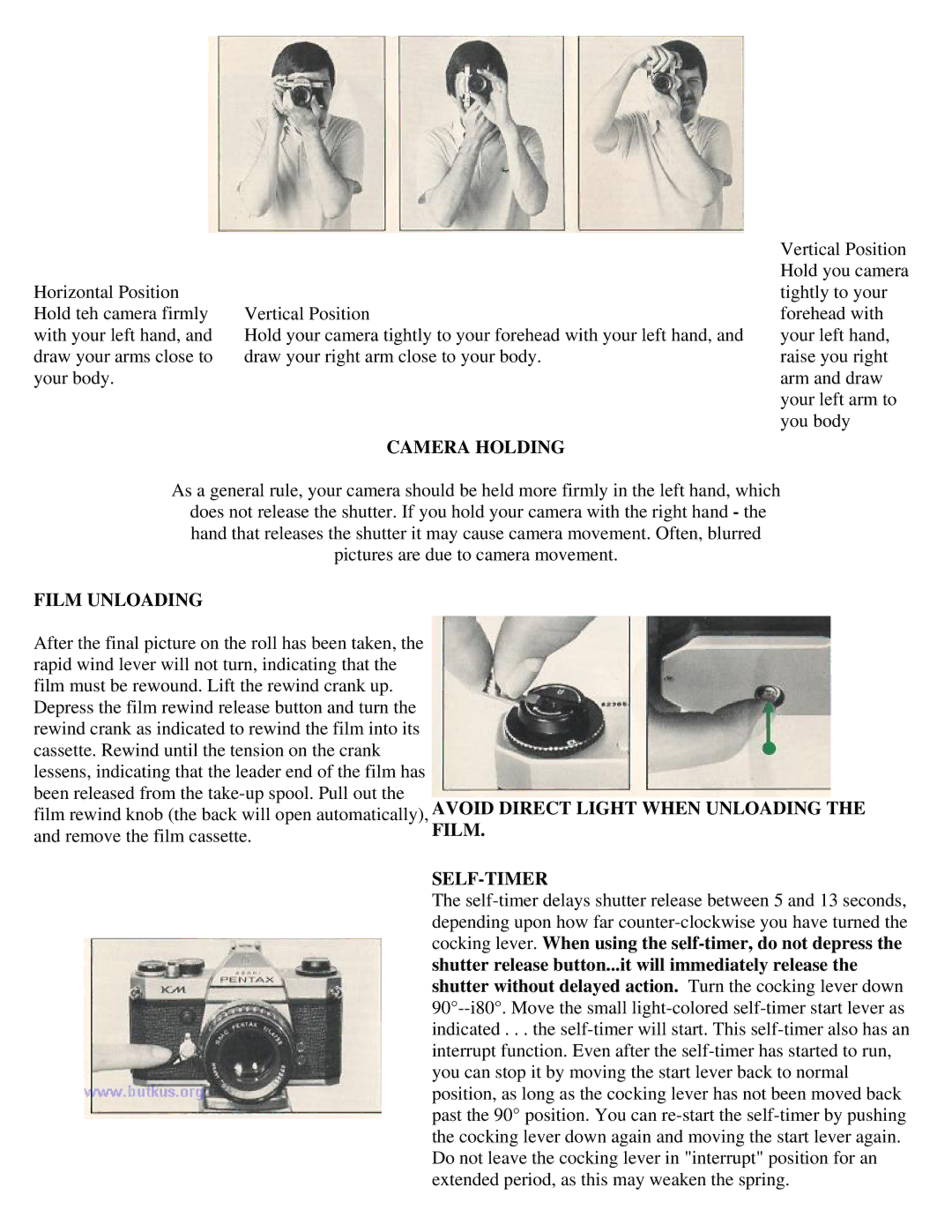KM Camera specifications
The Pentax KM camera, introduced in the late 1970s, is a classic 35mm single-lens reflex (SLR) camera that captures the essence of photographic innovation in its time. Renowned for its compact design and user-friendly features, the KM was a favorite among both amateur and professional photographers.At the heart of the Pentax KM is its robust and reliable pentamirror viewfinder system, providing a bright and clear field of view that allows photographers to compose their shots with precision. The camera's dual exposure modes—manual and automatic—offer versatility, appealing to a wide range of shooting preferences. The automatic mode is particularly user-friendly, enabling photographers to focus on their creativity without being bogged down by technical details.
One of the standout features of the Pentax KM is its lightweight and portable body, which makes it an ideal companion for travel and outdoor photography. The camera is built with a durable construction, ensuring it can withstand the rigors of everyday use. The classic design, with its sleek lines and robust grip, not only enhances functionality but also gives the KM a timeless aesthetic that many photographers appreciate.
The KM utilizes the K-mount system, making it compatible with a vast range of lenses and accessories. This adaptability allows photographers to explore various creative options, from wide-angle landscapes to detailed macro shots. The camera also boasts a fully mechanical shutter that operates without the need for batteries, providing an added layer of reliability in various shooting conditions.
The exposure meter integrated into the KM offers precise readings, ensuring that exposure settings are accurately determined for optimal results. The large, intuitive dials and controls simplify the shooting process, allowing users to make quick adjustments to shutter speed and aperture settings.
Additionally, the KM's simple yet effective film loading system makes it easy to transition between rolls, minimizing downtime during shoots. The camera also features a self-timer and multiple exposure capability, enhancing its creative potential.
In conclusion, the Pentax KM camera remains a beloved tool for those who appreciate traditional photography. With its blend of user-friendly features, versatility, and classic design, the KM is a testament to Pentax's legacy in the world of photography, embodying a timeless charm that continues to attract enthusiasts today.

